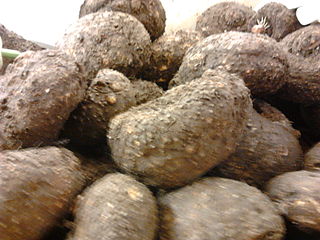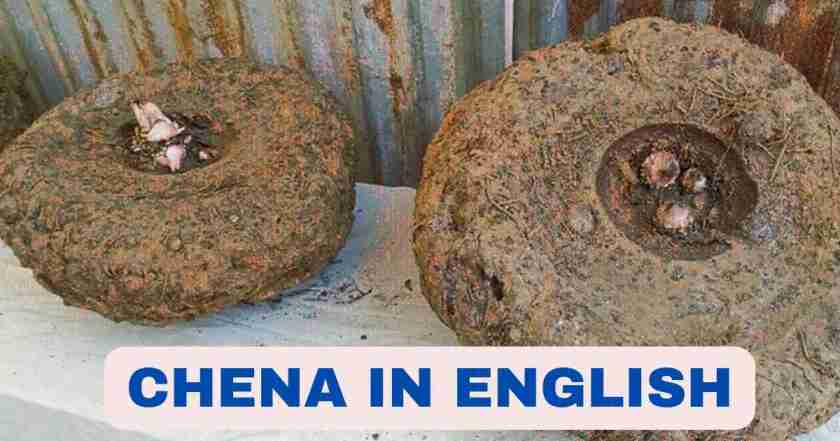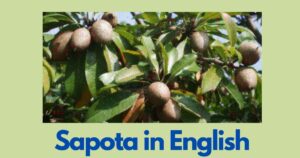Chena in English
- Chena English Name is “Elephant Foot Yam”
Chena in Tamil
- Chena Tamil Name is “Sena Kilangu”

Chena / Sena Kilagu / Elephant Foot Yam
Chena, known scientifically as Dioscorea alata, is a tropical tuberous root vegetable that holds a special place in the hearts and kitchens of Kerala, a southwestern state in India. Also referred to as Elephant Foot Yam, chena has a long-standing history in Kerala’s cuisine, culture, and traditions. Its unique characteristics, versatile culinary applications, and nutritional benefits have firmly established it as an integral part of the state’s culinary heritage. In Tamil, Chena is called as Sena Kilangu.
Its presence in traditional dishes like Chena Erissery, Chena Kappa, and Chena Mezhukkupuratti showcases the ingredient’s versatility and significance. Beyond its culinary role, chena becomes a conduit for shared memories and cultural heritage, embodying the essence of Kerala’s rich traditions. As a sustainable agricultural resource and a symbol of community, chena continues to nourish both body and soul in the vibrant tapestry of Kerala’s culinary landscape.
Chena in Kerala: A Historical Perspective
The connection between chena and Kerala dates back centuries. This root vegetable was introduced to Kerala’s shores and gradually became a staple food due to its adaptability to the tropical climate and its ability to thrive in the state’s diverse agricultural landscapes. Over time, chena’s significance expanded beyond sustenance to encompass cultural rituals, festive celebrations, and daily meals.
Culinary Exploration
In Kerala’s vibrant culinary landscape, chena occupies a cherished spot. Its distinct texture, flavor, and nutritional profile make it a versatile ingredient that can be utilized in various culinary creations. Chena can be enjoyed both in traditional dishes and modern adaptations, allowing it to cater to diverse tastes and preferences.
Chena Erissery: A Traditional Delicacy
One of the most iconic dishes featuring chena is “Chena Erissery.” This traditional preparation combines chena with ground coconut, aromatic spices, and sometimes lentils, creating a rich and flavorful dish. Chena Erissery is often served during festivals, family gatherings, and special occasions, reflecting the deep cultural roots of the ingredient in Kerala’s society.
Chena Kappa: A Nostalgic Favorite
Another beloved chena-based dish is “Chena Kappa.” In this preparation, chena is boiled or steamed and then sautéed with spices and grated coconut. Chena Kappa’s popularity lies not only in its delicious taste but also in the memories and nostalgia it evokes, making it a comfort food for many Keralites.
Chena Mezhukkupuratti: A Flavorful Stir-Fry
Chena also takes on a new avatar in “Chena Mezhukkupuratti,” a mouthwatering stir-fry dish. In this preparation, chena is diced and sautéed with a medley of spices until it develops a crispy exterior. The combination of textures and the infusion of flavors make this dish a delightful addition to Kerala’s culinary repertoire.
Chena Benefits
Here are the health benefits of Chena (Elephant Foot Yam):
- Nutrient-Rich: Chena is packed with essential nutrients that contribute to overall health and well-being.
- Dietary Fiber: High in dietary fiber, chena supports digestive health, prevents constipation, and promotes a feeling of fullness.
- Vitamins: Contains vitamins such as vitamin C, vitamin B6, and vitamin A, supporting immune function, metabolism, skin health, and vision.
- Minerals: Rich in minerals like potassium, magnesium, and manganese, which play roles in regulating blood pressure, muscle function, and bone health.
- Antioxidants: Chena’s antioxidants, including vitamin C and beta-carotene, combat oxidative stress and reduce the risk of chronic diseases.
- Blood Sugar Regulation: Its complex carbohydrates and fiber content help stabilize blood sugar levels, beneficial for diabetes management.
- Weight Management: Fiber promotes satiety, aiding in weight management by reducing overeating and controlling appetite.
- Heart Health: Potassium helps regulate blood pressure, while fiber lowers cholesterol levels, supporting cardiovascular health.
- Bone Health: Chena’s calcium and phosphorus content contributes to strong bones, reducing the risk of osteoporosis and fractures.
- Gut Health: Fiber supports the growth of beneficial gut bacteria, promoting healthy digestion and immune function.
- Anti-Inflammatory: Its antioxidants may have anti-inflammatory effects, reducing the risk of chronic inflammation-related diseases.
- Culinary Versatility: Chena can be prepared in various ways, making it a versatile ingredient in a wide range of dishes.
- Cultural Significance: Chena holds cultural and sentimental value in various traditions and celebrations.
- Sustainable Farming: Chena’s resilience to pests and adaptability to different climates contribute to sustainable agricultural practices.
Cultural Significance
Beyond its gastronomic allure, chena holds cultural and sentimental value. It is an ingredient that fosters connections and conversations, forming an integral part of family gatherings, celebrations, and communal feasts. The act of preparing and sharing chena-based dishes becomes a means of preserving traditions and passing down generational wisdom.
Sustainable Agriculture
Chena’s presence in Kerala’s agricultural practices contributes to sustainable farming systems. Its ability to thrive in diverse climates and soils, coupled with its resistance to pests and diseases, makes it an attractive option for local farmers. This in turn supports agricultural diversity and resilience in the face of changing environmental conditions.








